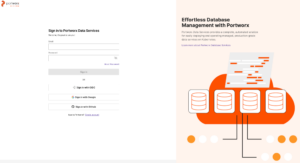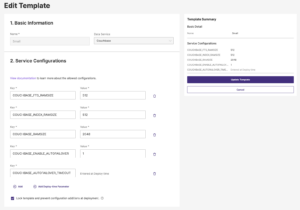Portworx Data Services (PDS) is a database platform-as-a-service that simplifies Day 0 through Day 2 operations for a curated catalog of databases deployed on Kubernetes. PDS empowers platform engineering leaders to provide developers with on-demand databases provisioned in minutes, with database teams benefit from streamlined lifecycle management – and the entire organization benefits from improved data resiliency, operational efficiency, and faster time-to-market.
In our most recent release of PDS (see release notes), we’ve integrated with external identity providers for user access, while making it easier for database and IT teams to manage deployments by non-administrative users. These improvements add further to those in September’s PDS release, in which we added support for graph databases with Neo4j and Always-On Availability Groups for Microsoft SQL Server.
User access with external identity providers: OpenID Connect (OIDC)
Portworx Data Services (PDS) can now manage user authentication with their own identity services, such as Okta, Keycloak, and Auth0, using OpenID Connect (OIDC). This makes it simpler for users to login at cloud.portworx.io, as they can use their firm’s single sign-on (SSO) mechanism to also access Portworx Data Services. This adds to existing login mechanisms, including username and password, as well as social logins from Google and Github SSO.

Customers can set-up OIDC based user-access for Portworx Data Services from Portworx Central. More details of the process to follow can be found in our documentation.
Controls for uniform configurations and simplified adoption
Portworx Data Services enables self-service to databases for users, allowing them to provision new databases on-demand, within sizing, configuration, and policy guardrails set by IT, database administration, storage, and platform engineering teams.

With our latest release, administrators can exercise greater control over databases deployed and managed with PDS. PDS administrators can now restrict users from appending their own database configurations, modifying configurations, or allow for changes and inputs for a specific, limited set of parameters. This means every business can accelerate database requests, while ensuring those databases comply with organizational policies.
In addition to the above, we’ve consolidated most of our database container images into a single repository owned, vetted, and managed by Portworx, which simplifies operations for our customers as they deploy databases into their Kubernetes environments via PDS.
In our latest releases of Portworx Data Services (PDS),we have also made it simpler for enterprises to adopt the solution. PDS has consolidated most of its container images into a singular repository which is owned, vetted and managed by Portworx, making it easier for enterprises to access only the trusted repository from Portworx – whether it be for creating a local image repository (or) access control from their Kubernetes environments.
Get started with latest Portworx Data Services
Portworx Data Services is now ready for use with the above-listed functionalities and other improvements listed in our documentation. Existing PDS customers can continue to login and use PDS via cloud.portworx.io and use the new features and functionalities.
If you are not a Portworx Data Services customer and would like to try out the modern Kubernetes based data-service platform. Feel free to reach out to us directly or connect with your Pure Storage (Portworx) account representative to get started..

